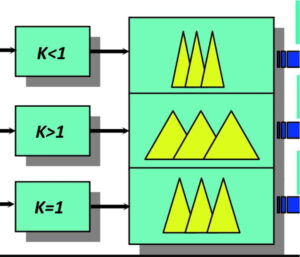
What are Resistors?
What are Resistors or Resistance Introduction Resistors are two-terminal devices that are used to control the passage of current, to put it simply. Understanding the

What are Resistors or Resistance Introduction Resistors are two-terminal devices that are used to control the passage of current, to put it simply. Understanding the
| Arduino Basics | My First Project Control | Begin with Coding | Basics of Microcontrollers | My experiments and subition | Making small products | Lets start with 3d Printing | What is Network and IOT | I can make Jarvis | Talk with computer and Robots | LiFi Communication | Introduction to Artificial Intelligence | My first Robot and Program | Sensors and Experiments | Real world Problem Solving | Live projects from companies | I become a instructor | Read More…

What are Resistors or Resistance Introduction Resistors are two-terminal devices that are used to control the passage of current, to put it simply. Understanding the







| LiFi Communication With Solar Panels | Brain Wave Device Control | Augmented Reality With Artificial Pond | Neural Networks | Gravity Lift For Green Power Generation | Embedded Systems | Internet Of Things (IoT) | Cloud Computing | Cybersecurity | Robotics(ROS) | LiFi Communication | Artificial Intelligence | Machine Learning | Computer Vision | Expert System | Speech Recognition | Natural Language Processing | Read More…
This is how how we work for services above mentioned















| LiFi Communication With Solar Panels | Brain Wave Device Control | Augmented Reality With Artificial Pond | Neural Networks | Gravity Lift For Green Power Generation | Embedded Systems | Internet Of Things (IoT) | Cloud Computing | Cybersecurity | Robotics(ROS) | LiFi Communication | Artificial Intelligence | Machine Learning | Computer Vision | Expert System | Speech Recognition | Natural Language Processing | Read More…
Almost all of the tools that people use are powered by electricity and this is the ultimate reason why someone should be familiar with electrical and electronic concepts. Mostly, it works on information processing and energy conversion. Then you may think about all the different applications for that. As a result, electrical engineering primarily teaches you how those processes work as well as how to use the techniques in novel contexts. One needs to be extremely creative, do a lot of math and physics in many areas, and be able to compute things and find out how things operate. In the upcoming content, we will be discussing how these fields got a start and will discuss the career scope.

To create innovative electrical goods, applications, and systems, the field of electronic and electrical engineering was introduced. The advent of electricity gave rise to the electrical field. William Gilbert introduced static electricity, which led to the discovery of “electricity.” He was the first to notice the connection between magnetism and electricity. He also invented a device named an electroscope. Further, in the 1700s, devices to generate static electricity were invented. Then in 1705, Neon light was created by Francis Hauksbee. By adding mercury to a glass globe, pumping the air out of it, and spinning it, he produced electrical phenomena. He rubbed it with his entire hand after doing this in the dark, and it began to glow.
| Company | Contact | Country |
|---|---|---|
| Alfreds Futterkiste | Maria Anders | Germany |
| Centro comercial Moctezuma | Francisco Chang | Mexico |
| Ernst Handel | Roland Mendel | Austria |
| Island Trading | Helen Bennett | UK |
| Laughing Bacchus Winecellars | Yoshi Tannamuri | Canada |
| Magazzini Alimentari Riuniti | Giovanni Rovelli | Italy |
The father of electronics is regarded as electrical. Electronics is a branch of electrical engineering, to put it simply. These two areas are divided according to a range of factors.
Electricity and technology appliances are increasingly regarded as necessities of daily life. Due to our increasing reliance on electrical and electronic products, the discipline of electrical and electronic engineering has significantly grown from earlier decades. The employment rate in the electrical and electronic industries is steadily increasing in order to meet the wide range of consumer needs in India and abroad. All surroundings, including those involving transportation, finance, other business, public sectors, and even educational facilities, require electrical and electronics engineering.

What are Resistors or Resistance Introduction Resistors are two-terminal devices that are used to control the passage of current, to put it simply. Understanding

Difference between Electrical and Electronics
| History | How Electrical is different From Electronics? | Future | Introduction Almost all of the tools that people use are powered by electricity and

Click edit button to change this text. Lorem ipsum dolor sit amet, consectetur adipiscing elit